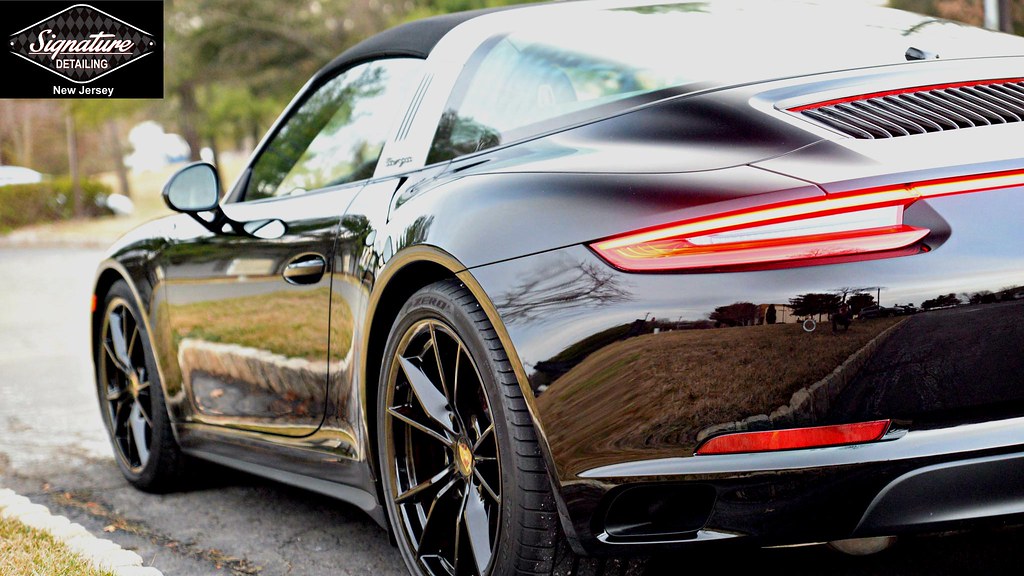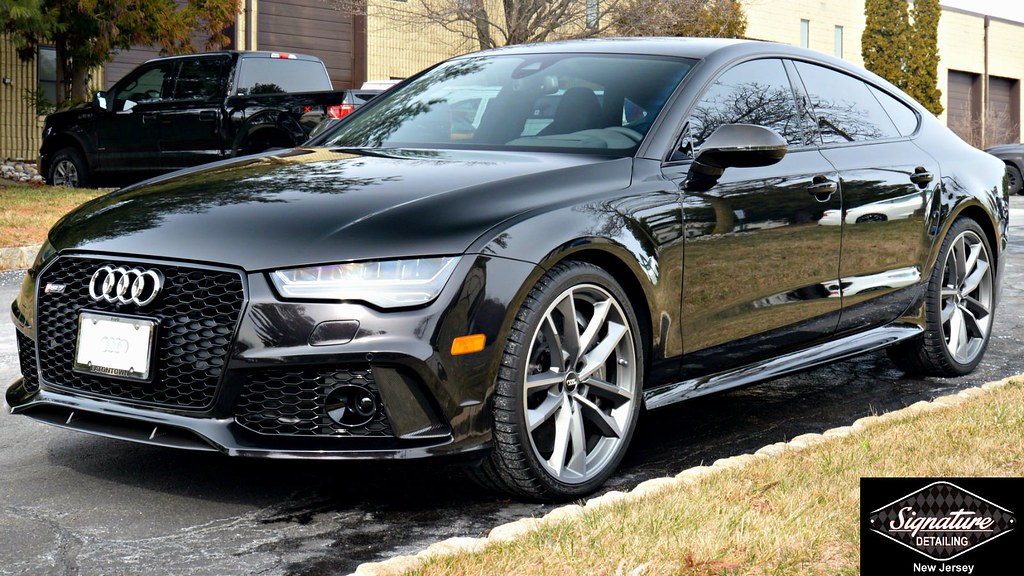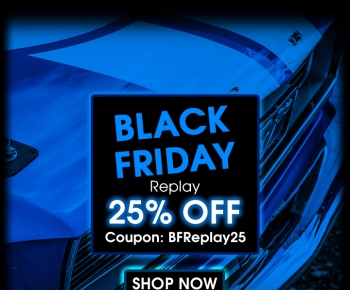Choosing the Best Vehicle Surface Protection: Paint Protection Film or Ceramic Nano Coatings? (Part 2)
by Greg GellasAs a professional detailing shop in Northern New Jersey, Signature Detailing retains many clients who are car enthusiasts and therefore take their car care very seriously. Often these owners routinely ask our advice on “what is the best means of surface protection for their vehicle”. Since this is such a common inquiry for detailing services, I thought it’s important to devote a series of three articles, which will highlight the strengths of each type of vehicle surface protection dependent on the owner preferences, driving habits, and viability of the protection type. These articles will serve as a guide for those who are searching for the best protection for their vehicle based on their situation.
The first article will explore Paint Protection Film and its general protection options. The second article will delve into Ceramic Nano Coatings and the type of surface protection they provide. And the final article will discuss how a hybrid approach of combining Automotive PPF and Ceramic Nano Coating could possibly be the best choice for a vehicle. To view all of the articles in this series, click here!
Ceramic Nano Coatings can range in their technology type. However, currently, the majority of major coating manufacturers offer a Si02 (silica dioxide) based coating. Commonly the terms “glass” or “quartz” will accompany these products, this is another term for the silica dioxide (Si02), When applied properly most of these Si02 coatings bond to the surface, creating a hardened structure that, when fully cured, is harder than the original paint and has perfect optical clarity like glass.
This article will not argue the merits of which coating is the best. What will be explained are the major types of protection offered by most ceramic nano coatings and what can be expected in terms of performance from the vast majority of major coatings on the market today.

This Porsche 911 Targa 4s received a ceramic Nano Coating after Paint Correction by Signature Detailing NJ.
Ceramic Nano Coatings are not a Singular Solution for Surface Protection
Similar to what was mentioned in Pt. 1 of the series about PPF, contrary to some popularized or marketed beliefs, ceramic nano coatings are not a solve all force field for vehicles. They will not prevent chips or impact gouges from road debris like PPF. Instead, they are mainly a great way to add enhanced protection to vehicle surfaces and help to greatly reduce the amount of time and effort in regular surface maintenance cleaning.
The main benefits of most major Ceramic Nano Coatings are as follows:
- A glossier and more reflective surface.
- A Harder Surface than OEM paint: Increased scratch resistance to fine swirls and marring.
- A Hydrophobic Surface: The coating creates high surface tension, which helps the vehicle stay cleaner longer & easier to clean since water easily sheets off the surface.
- Heightened Environmental Resistance to tree sap, bugs, tar, and bird bombs.
- Increased Chemical Resistance to iron contamination, industrial fallout, and other chemicals.
- Enhanced UVA & UVB Protection for Color Integrity
As a detailing business owner, I have seen the significant practical success of coatings on vehicles over the years. Signature Detailing, being located in Northern New Jersey, sees its fair share of weather extremes annually– from snow and road salt in winter to high heat and constant humidity in summer We have witnessed the benefits listed above to have been extremely useful to protect vehicles serviced from of our shop.
The Real World Results of Ceramic Nano Coating Protection
Ceramic or ‘Glass’ Coatings are a great option for vehicle owners who want their vehicle to look their best while also increasing the ease of maintenance washing and usually reducing the frequency between washes. Additionally, automotive paint coatings offer consumers a very cost friendly balance between wanting to protect their vehicle while not completely breaking the bank. That being said, the majority of costs associated with ceramic nano coatings comes with the preparation of the surface before the coating itself is applied. Paint Correction is a must in order to maximize both the adhesion properties of a coating and to bring about the best possible finish once the coating is applied.
Paint correction is the process of permanently removing defects from a painted surface in order to refine the finish to the degree the owner desires. Since the basis for a coating to looks its best is based on the paint correction, naturally, vehicle owners would want to select a ceramic nano coating installer who specializes in paint correction to maximize both performance and the quality of the vehicle’s finish.

This Audi RS7 was paint corrected and ceramic nano coated by Signature Detailing New Jersey.
Reasons to Choose A Ceramic Nano Coating over a Paint Protection Film
- Rock Chips don’t really bother you
- The cost associated with coatings is much lower than PPF and covers all painted surfaces
- Coatings (with paint correction) help to enhance the look of entire vehicle.
- Coatings provide UV protection, increased hardness, and ease of maintenance
So, while Coatings and PPF are in no way similar in terms of impact protection, they do have a bit of overlap in some of their protection aspects. However, one is not the substitute for the other or vice versa.
As with all consumer decisions, do your homework and research the products in depth for their specific traits. Another method of research could be to speak to vehicles owners who have experience with a particular coating on their vehicle. They can sometimes share insights centered around real-world performance aspects of a particular product.
Similarly, ask vehicle owners about the detailer who installed their coating. Also, don’t be afraid to reach out to prospective detailing shops and ask them about their services and the processes involved in installing a paint coating. Researching and finding a quality craftsman, who is established, reputable, professional, and willing to answer any of your inquiries is the best way to evaluate if the service and the product is ultimately the choice for you.
In the upcoming and final part of this series, the hybrid approach of protecting vehicles with Paint Protection Film and Ceramic Nano Coatings will be explored.
Related Posts
- Choosing the Best Vehicle Surface Protection: Paint Protection Film or Ceramic Nano Coatings? (Part 3)
- Choosing the Best Vehicle Surface Protection: Paint Protection Film or Ceramic Nano Coatings? (Part 1)
- Auto Detailing Myth: Ceramic Coatings are Invisible Vehicle Force Fields
- Detailing Projects: Ferrari 488 Pista #2 Paint Correction, Clear Bra, & Ceramic Coating
- Detailing Projects: Ferrari 488 Pista Paint Correction, Clear Bra, & Ceramic Coating








Awesome article Gregory. Does DI even sell PPF though?
Gregory will probably answer your question shortly, but, in my opinion, adding PPF as a DIY project is probably unwise unless you’re very experienced in the procedures. Adding a “glass coat” is simple enough and gets great results for even inexperienced do-it-yourselfers (like me), but I for one would want my PPF installed by a Pro Detailer.
I would agree with you on the PPF as a DIY project, especially doing areas that are curved or uniquely shaped. It pays to have a Pro apply it.
With glass coatings, I will say it depends but yes it is simple if folks follow directions. On various forums we still see many posters who have issues due to missing steps or just plain inexperience. Applying a coating, even consumer ones, requires patience and tools for success. Inevitably, the coatings then get a bad rap due to no fault of their own.
Disclaimer, Greg did install CQFinest and XPEL film on my truck over two years ago. With proper care, it still looks brand new and both are doing a great job in protecting.
Great series of articles Greg!
Really like idea of “self healing” PPF. Have any suggestions for coatings that are fairly easy to apply for a do-it-seller?? Thanks
Wow, I had no idea that there were so many options available when it came to choosing a coating to protect your car’s surface. However, your article makes a very good argument for why ceramic nano coating might be the better option. After all, if it can keep things like rock chips from damaging your paint job then you do not have to be careful when driving.